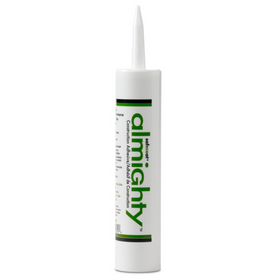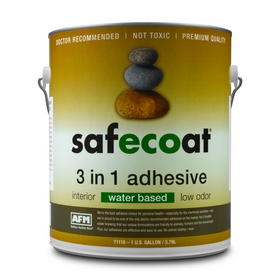
This Old Victorian Home in Minneapolis Becomes Net Zero
Last Updated: Feb 8, 2025On a beautiful October day, I had the privilege of sitting down with Stewart Herman to tour his home and learn more about what inspired Stewart and his wife, Linda, to take a century-old home and renovate it to become not only net-zero energy but net-positive—meaning they produce more energy than they consume.
Stewart and Linda Herman saw themselves as aging baby boomers who, when they retired from their teaching positions, wanted to find their “last house” in Minneapolis, Minnesota. They did not want to build a new home—they wanted the charm and beauty of an older home in the city—so a remodel was the only option for them.
Table of Contents
- Unique Features of the Home
- Never Truly Retiring From Teaching
- Being Part of the Solution
- The Best Surprise of All

The Hermans have been very interested in the idea of “aging in place,” living in a home that is comfortable and livable, but designed with the future in mind: they might need to make it accessible for ramps, wheelchairs, etc. To meet their aging in place goals, stairways would need to be widened, and all doors would be at least 36” wide, to accommodate wheelchair access.
But to them, the future isn’t just about themselves and the possibility of failing bones and joints—it is about a healthier future for their grandchildren (and our world), which means limiting the burning of fossil fuels, reducing waste, conserving water, and managing stormwater onsite—to name just a few of the issues their home addresses through its design and renovation.

How did their journey begin? In 2014, they found a 107-year old Victorian home on a small city lot in Minneapolis. Serendipitously, Stewart had stopped by a Home and Garden Show, where he heard about the concept of a “net-zero energy” home. Having been intrigued by renewable energy since the energy crisis in 1973, he told me, “When I learned about Net Zero Energy homes, a light bulb went on.” Could they remodel an existing home such that it would not contribute to climate change? The next year of design and two years of construction proved that they could.
Unique Features of the Home
Typical to most net-zero energy homes, this old Victorian was retrofitted with all LED lights, triple pane windows, and efficient, ENERGY STAR appliances. No gas appliances are in the house, eliminating the need for combustion venting and keeping the indoor air quality healthier (the code-required carbon monoxide detectors will never be triggered). What is not typical is that this home was a remodel—so several innovative ideas needed to be incorporated. Below, we share a few highlights, excerpted and slightly modified from Stewart’s “Innovations” Flyer he wrote himself to share his knowledge.

1. Insulating the house from the outside.
Typically, old homes are insulated by tearing out the interior walls and putting in fiberglass batts, or punching holes in the walls to fill with cellulose or other types of insulation. This home used the “PERSIST” (Pressure Equalized Rain Screen Insulated Structure Technique) insulating system, which involves insulating the house from outside. But because the walls were pushed out, they had to apply for a variance in the permitting process—which was eventually granted, but it did delay the project. The benefit of adding insulation on the outside was that no space was lost on the inside. (In theory, it would also mean that fine plaster walls could be preserved, but they needed to gut them for HVAC and plumbing access.) The result was highly insulated walls, rated at R-40.

2. Making the house “tight” while controlling moisture.
Much heat and moisture are lost through leaky walls. This house was wrapped in a sticky membrane made by 3M, which prevents moisture from becoming trapped and causing mold or rot. Forty percent of the insulation is inside the 3M barrier, and moisture will evaporate back into the living space, where humidity averages a comfortable 40 to 45 percent. The other sixty percent of the insulation was outside the 3M barrier but inside the Tyvek barrier. Air (and moisture) are allowed to circulate freely under the siding without entering the house. The result is that the house is almost five times tighter than building code requires, and practically meets the Passive House standard.

4. Making a roof fit for solar panels.
The original 1907 house had a “balloon” frame constructed of slender 2″x4″s—not suitable for solar photovoltaics (PV). The Hermans added a new roof of plywood I-beams on top of the old roof. The space between the I-beams was filled with 10 inches of foam insulation; combined with the 6 inches of fiberglass batting under the old roof, they were able to insulate the roof to R-80. The roof supports 42 solar collectors—weighing one ton in all. Supporting all this new construction is a massive laminated ridge beam, which workers installed by hand. They added another 12 solar collectors on the detached garage, resulting in a 17-kilowatt solar photovoltaic array that produces more electricity than the house consumes (hence, “Net Zero”).

6. Saving energy by recycling heat.
In most homes, it’s amazing how much heat is wasted out of the vents. In this home, the heat exhausted from bathrooms, and the kitchen is used to warm incoming outside air through an Energy Recovery Ventilator (ERV). Also, all excess heat from the geothermal heat exchanger is used to pre-heat the domestic hot water. Both of these efficient technologies help decrease the amount of energy needed to heat and cool the home and the water. (Note that a geothermal heat exchanger was not an easy install for a retrofit, with only 30x40 feet backyard. While they were not sure if they could even get a rig in there, they ended up putting in 4 wells 10 feet apart, each at 250 feet deep.)

Never Truly Retiring From Teaching
Back in 1978, Stewart Herman wrote Energy Futures: Industry and the New Technology. Now, he is writing articles, has created brochures, and offers free tours and speaking engagements about their home. Why? He told me, “Linda and I intended this house to be a teaching tool for anyone who wants to renovate their home.” As Stewart later wrote in an article for The Cresset, “We had a mission and a message for the wider world. As (retired) teachers, we wanted to demonstrate that an ordinary old house on an ordinary, small, urban lot could be purified of fossil fuel and accommodate all the technology needed to achieve net-zero. More ambitiously, we wanted the house to demonstrate to skeptics that a comfortable lifestyle and environmental sustainability need not clash and that carbon emissions could be lowered drastically without any sacrifice in comfort or convenience. In other words, we thought we weren’t just building for ourselves.” Stewart has loved the process and results so much that he is spreading the word to other aging baby boomers.

Being Part of the Solution
Looking at our homes as part of the solution to our planet’s issues is becoming a trend because, with newer technologies, we can do so much more with our homes. But what is so unique and important about this home is that it is a renovation of an existing house. As the building community is called upon to address climate change, new buildings can more easily be built to being at least net-zero ready. But the existing building stock—to the tune of over 70 million single-family owner-occupied homes in the United States—presents much more of a challenge. Since most buildings are existing buildings, and they tend to last a long time, renovations are a necessity. For the Hermans, the overall results are quite satisfying. They estimate they offset carbon at a rate of 12 tons per year. Stewart wrote, “We have the daily, delicious experience of feeling that we are part of the solution rather than part of the problem.”

Team
Design by Marc Sloot, SALA Architects, and Katie Leaf, SALA Architects
Interior Design by Marc Sloot and Homeowners
Landscape Design by Marc Sloot and Homeowners
Construction by Sean Morrissey, Morrissey Builds
Landscape Installation by Charlie Kraemer, Landscape Charlie
Structural Engineering by Christian Soltermann, Align Structural
Mechanical Design and Installation by Jason Massmann, Massmann Geothermal and Mechanical
Photovoltaic Array Design and Installation by Innovative Power Systems
Melissa Rappaport Schifman
Melissa became the Twin Cities’ fifth LEED for Homes Accredited Professional (LEED AP) and completed the work necessary to get her own home LEED Gold Certified, the basis for her book, Building a Sustainable Home: Practical Green Design Choices for Your Health, Wealth, and Soul, (Skyhorse Publishing, August, 2018). With her corporate experience in finance, marketing, and business development, and an MBA and Master’s in Public Policy from the University of Chicago, Melissa has been providing sustainability advisory services to businesses, governmental agencies and non-profits, focusing on strategic and operational change that provide bottom-line financial returns. She has led the LEED certification of two million square feet of commercial buildings, written GRI-compliant Corporate Sustainability Reports, is a LEED Pro Reviewer and LEED mentor with the U.S. Green Building Council. She is the founder of Green Intention LLC where she writes about sustainable home living.













